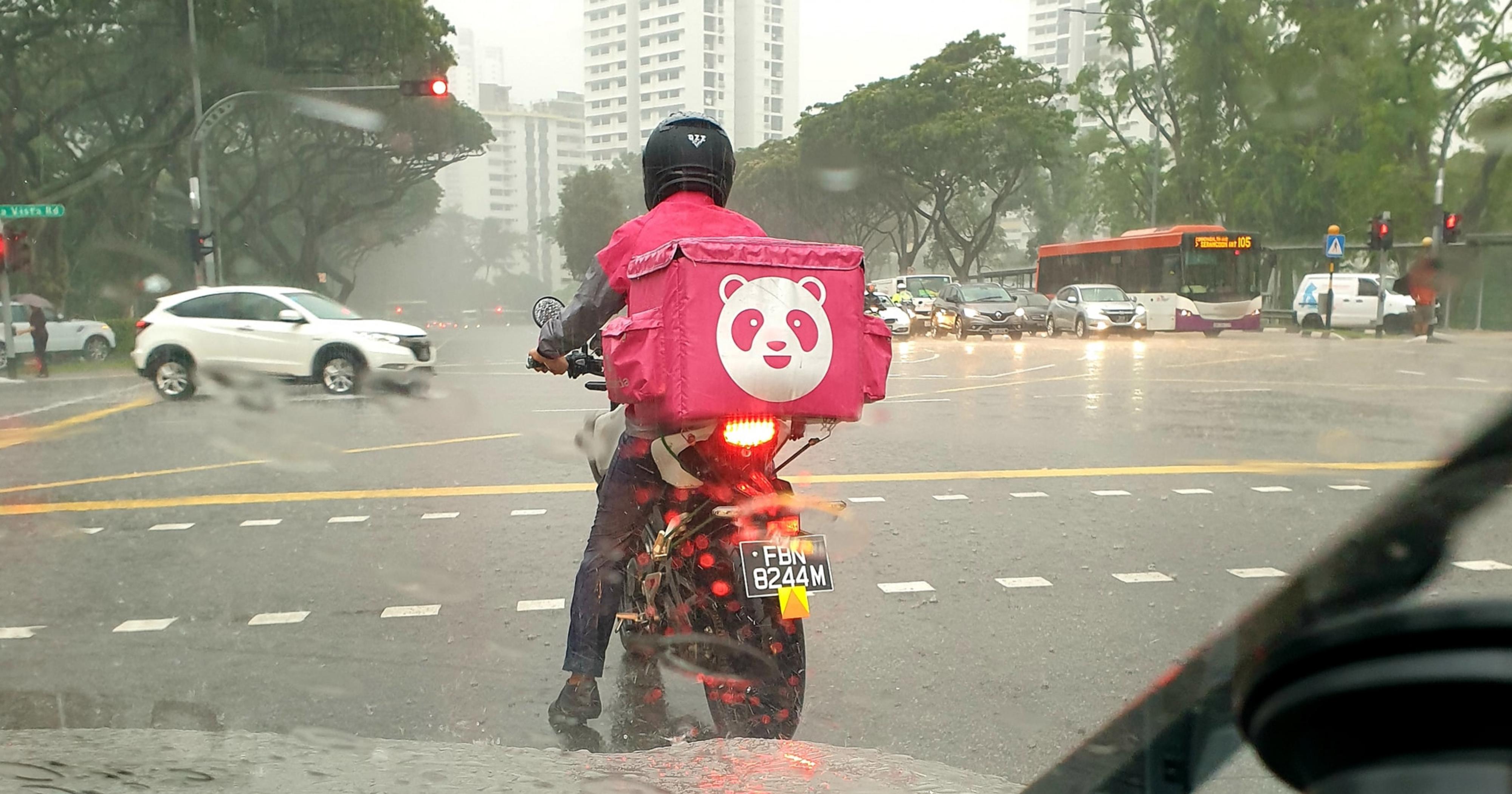Follow us on Telegram for the latest updates: https://t.me/mothershipsg
Food delivery riders in Singapore may sacrifice rest, health and safety during their work, all of which are found to be "prerequisites for "significant" earnings.
This finding came from a survey of 1,002 food delivery riders in Singapore, and was published by the Institute of Policy Studies (IPS) on Nov. 4.
Most fear not being able to earn enough due to increased competition
The riders surveyed delivered food using all modes of transport, including those who walked.
Most riders shared that they were worried that they were not able to earn enough money, with 68 percent attributing their concerns to increased competition in the industry.
This is because the number of riders on the island has increased at a rate that outpaces the demand for food delivery services.
On top of this, companies are offering riders fewer financial incentives and reportedly reducing the fares for each food delivery order.
These factors, coupled with an increasing cost of living, has caused some riders to find it hard to sustain a living through delivering food.
Sacrifice rest, risk health and safety to earn more
As such, riders in Singapore may sacrifice rest, health and safety in order to earn more, the study speculates.
Worked long hours
Of those surveyed, 40.6 per cent of riders reported working more than 44 hours a week, which is more than what the Ministry of Manpower stipulates.
The number of weekly hours are correlated to riders' earnings, with those working between 10 to 12 hours earning more than S$5,000 and above while those who worked fewer hours, between the 8 to 12 hour range, earned less than S$$5,000.
Risked health and safety
When asked if they engaged in certain behaviours to achieve or exceed their target earnings, 17.7 per cent of riders who used e-bikes, power-assisted bicycles or motorcycles to do their delivery work admitted that they resorted to riding faster than the permissible speed limits.
One-third of riders have been in at least one work-related accident
IPS found that riders with higher earnings were more likely to have been in a work-related accident that required medical attention.
Nearly a quarter of the riders (24.3 per cent) who earned less than S$1,000 each month have been in at least one work-related accident. But this number increased to 36.6 for those who earned S$3,000 and above monthly.
In that vein, riders who work more hours are more likely to have been in an accident, where 38.3 per cent of riders who rode 51 hours or more each week had met with a work-related accident at least once.
This finding is similar for those who ride faster than what is allowed.
More social protection for riders
IPS stated that there were many areas where the social protection of riders needed to be improved in order to safeguard riders' welfares, especially in the long run.
This is especially pertinent as riders may risk their rest, sacrifice their health and safety to earn more money, and in turn places them at a higher risk of meeting with an accident.
Considering their vulnerability to accidents, IPS said there is a clear need for the social protection of riders.
This is especially so as riders are more likely to choose having a higher income over contributing to their (Central Provident Fund) CPF and Medisave, which aids their social protection.
IPS concluded its survey by recommending that broad based social protection schemes, such as CPF contributions, be mandatory.
About the IPS survey
IPS conducted its study from July to August 2022 and surveyed 1,002 riders from all the food delivery platforms in Singapore.
The riders were either Singapore Citizens or Permanent Residents who relied on food delivery riding for at least a quarter of their monthly income.
In terms of race, 52 per cent were Chinese, 42 per cent were Malay and 5 per cent were Indian. The last 1 per cent were of other racial backgrounds.
84 per cent of the riders were men while the remainder were women.
71 per cent of the respondents were below the age of 40, where 36 per cent were 30 to 39 years old, and 35 per cent were 21 to 29 years old, and the rest were aged 41 to 65 years old.
The top 10 per cent of the riders earn more than S$3,500 per month, with only 3.2 per cent taking home more than S$5,000 per month.
Majority of the riders (71 per cent) earn less S$3,000 each month, where close to half (34 per cent) earn between S$1,000 to S$1,999.
Top image from Zye Hensem /Facebook
If you like what you read, follow us on Facebook, Instagram, Twitter and Telegram to get the latest updates.
